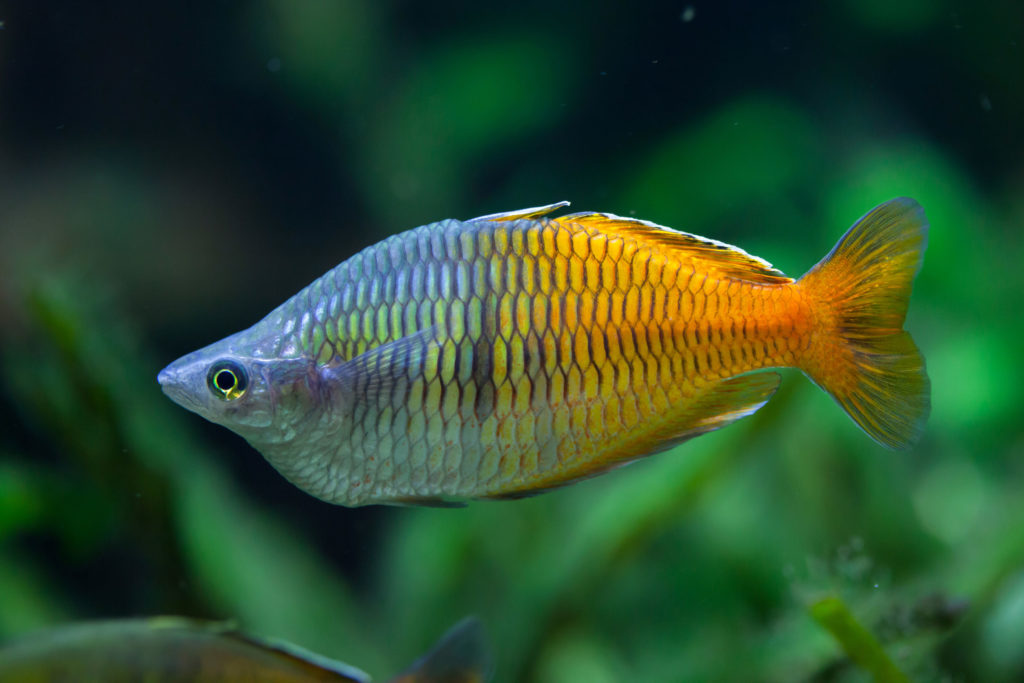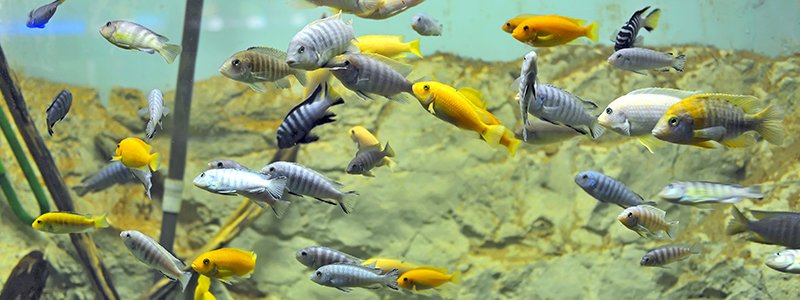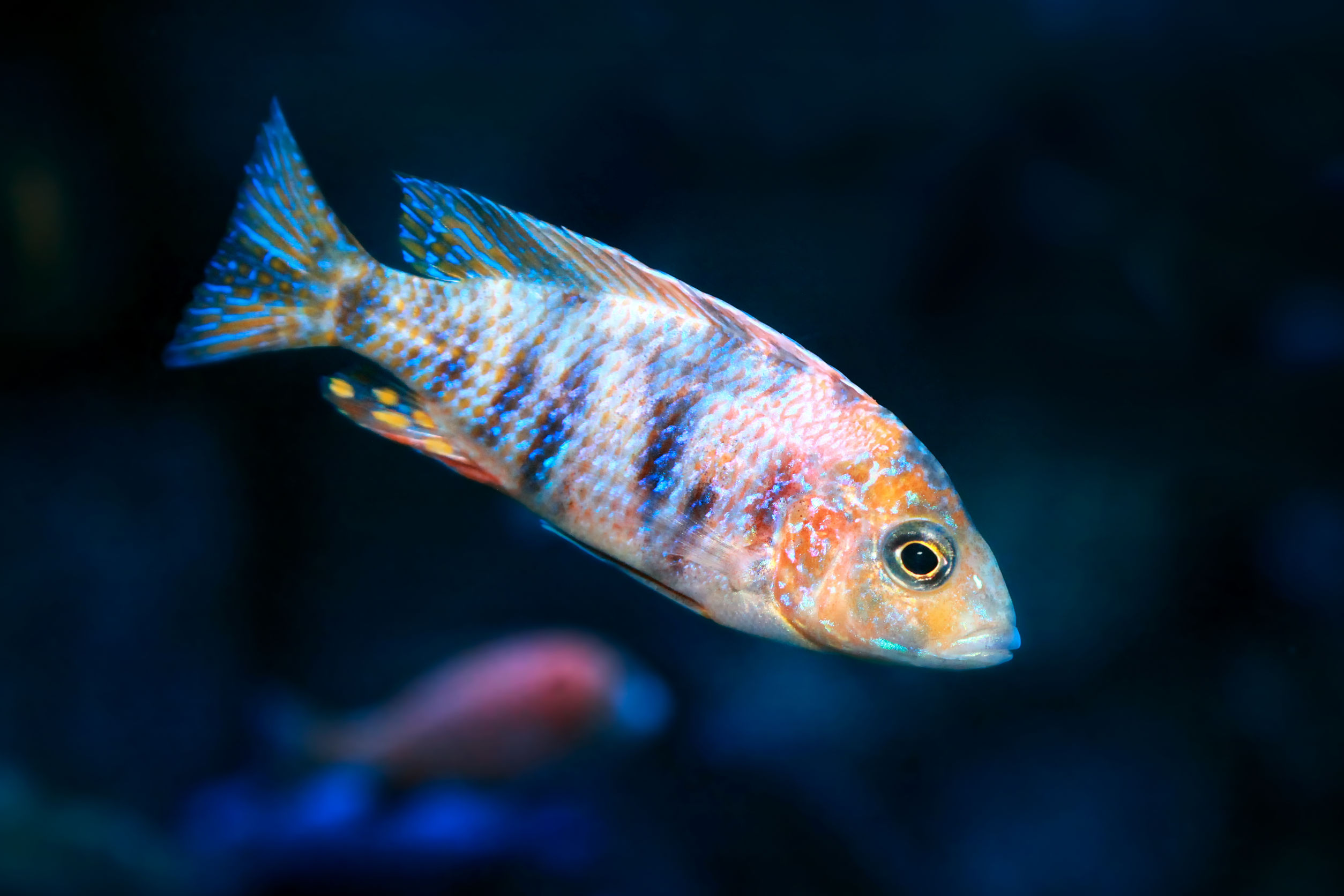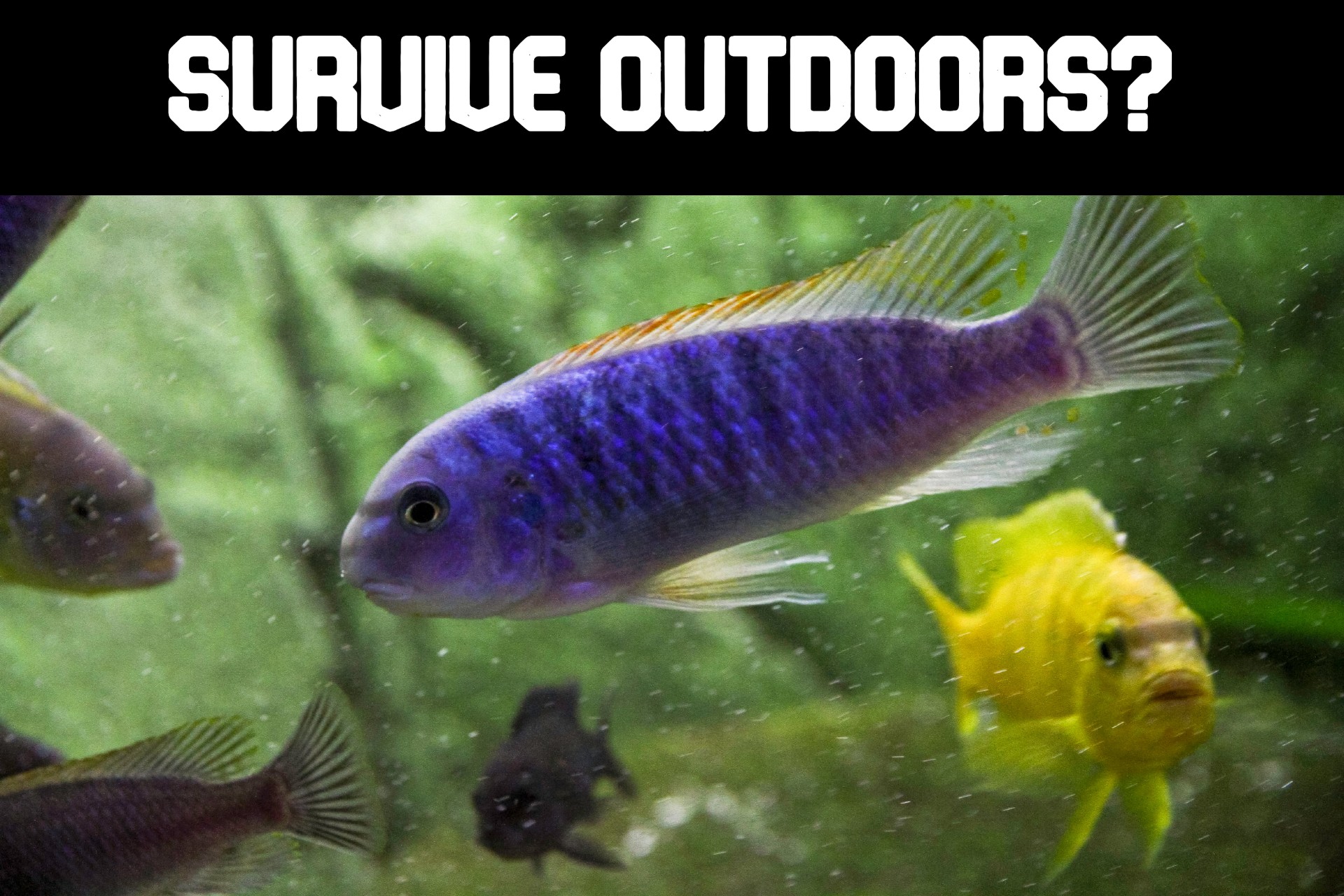A very common choice for aquariums, Cichlids of all varieties can make a tank pop with their naturally vibrant colors and a large variety of shapes and sizes. As varied as Cichlids may be, it’s always good to shake up the tank with some additional species as tank mates to give the aquarium more life.
Cichlids are naturally a more aggressive species, meaning any potential tankmates must be able to match their aggression or survive it. Medium-sized freshwater fish work well in tanks with most breeds of Cichlids, as they are too large to be easily eaten and enjoy the same water environment.
Though there are a lot of different breeds of Cichlids, each with its own size and personality, there are some species that make great tank mates for most Cichlids. We will explore some specific examples of great tank mates, and then talk about the defining characteristics of a good tank mate for Cichlids.
What are the Best Fish to Pair with Cichlids?
Not all fish pair well with Cichlids, due to Cichlids’ generally aggressive nature. Despite the Cichlids’ aggression, there are many good options for tank mates.
However, some Cichlids are more peaceful than others, especially the Angelfish, the most peaceful Cichlid of them all. We wrote an article dedicated specifically to the best tank mates for Angelfish here, as there will be some differences in suitable tank mates for most Cichlids than there will be for Angelfish; though you may find some similarities.
1. Boesemani Rainbow Fish

Boesemani Rainbow Fish are like the best friend of the Cichlid.
- They are peaceful fish that stay in schools
- They stay in the middle of the tank
- They are medium-sized fish, at four to six inches, meaning they can hold their own against a Cichlid
An excellent tank mate for Cichlids, Rainbow Fish also look amazing, with vibrant blue fronts and a fiery orange dorsal section.
2. Clown Loaches

Named for their clownfish-esque coloring, the Clown Loach is a member of the catfish family. Clown Loaches are peaceful fish that live on the bottom of the tank, similar to the Plecostomus below. However, where a Plecostomus is fine being on its own, Clown Loaches do best in schools.
One of the downsides to the Clown Loach is its adult size. Clown Loaches can grow up to a foot in length. Now, as they love to be in schools, can you imagine a school of foot-size loaches swimming around on the bottom of your tank? These beautiful fish are best for a large tank.
3. Plecostomus

The Plecostomus, also known as a Pleco, is a species of catfish, hence the nickname “suckermouth catfish”.
These armored fish are peaceful, bottom-feeding algae eaters, and will keep your tank clean from algae while staying away from the generally top-dwelling Cichlids. If a Cichlid does decide to get feisty for whatever reason, the Pleco is quite armored, and likely won’t even get a scratch.
Be careful to choose the right Pleco for your tank, as the common Pleco can grow up to two whole feet in length! Bristlenosed Plecos are a good option if you don’t have a tank big enough for a two-foot Pleco.
4. Other Cichlids

Despite popular belief, it is actually okay to have some Cichlid breeds in the same tank together. The key to having your Cichlid breeds peacefully coexist is matching their aggression levels and size.
Cichlids that work well together are:
- Convict Cichlids
- Tricolor Cichlids
- Mbuna Cichlids
- Firemouth Cichlids
- African Cichlids
What Makes a Good Tank Mate for a Cichlid?
When choosing a tank mate for any fish, let alone Cichlids, it is important to know what makes a good tank mate for that specific fish. The traits we look at are:
- Size
- Personality
- Water Environment
- and Tank Space
Whether or not they are on the list of best tank mates above, any fish that checks these boxes will most likely be suitable tank mates (but we can’t guarantee that, so do your research!).
Size
Most Cichlids are decently sized fish, clocking in at anywhere from four inches to a foot or more.
Fish that will be compatible with Cichlids will have to be a minimum of two inches long. Any smaller than two inches, and the fish will be an easy meal for the Cichlids. Two inches is already cutting it close.
Likewise, it is probably wise to have fish that aren’t too big, either, especially if they tend to be aggressive. Try to keep your tank mates around the same size as each other, not having fish that exceed four inches bigger than your Cichlids.
Personality
Cichlids are, by nature, aggressive fish. They are prone to nipping, bullying, and harassing other fish, particularly fish that are smaller and timider than they are.
The best counter to their aggression, unlike most things in life, is fish that are also aggressive. Having fish that are willing to stand their ground against the Cichlids will prevent bullying and harassment amongst your fish, provided they aren’t too aggressive and bully the Cichlids.
The exception to this are fish that are peaceful, but large and fast enough to fend off bullying.
Water Environment
Cichlids are almost always freshwater fish, so the fish that share a tank with them should also be freshwater enthusiasts.
Seeing as most breeds of Cichlids come from tropical environments, they need warmer water temperatures at around 78-82 degrees Fahrenheit.
Tank Space
Cichlids do best with fish that inhabit the areas of the tank where the Cichlids themselves are not. Cichlids quickly become territorial over the section of the tank they inhabit.
Also, Cichlids love to have little hidey holes and caves, and if not properly managed by changing the scenery of the tank around every so often, can become territorial of those areas as well.
Though Cichlids tend to be aggressive, it is possible to manage a peaceful tank with lots of wonderful tank mates to swim alongside. We love Cichlids in all of their varieties, and hope that you are able to find some excellent tank mates for your very own Cichlids!




